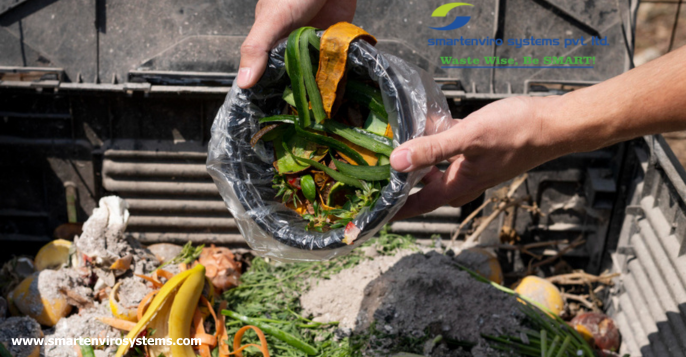Are you excited to learn about compost machines? These amazing machines take your leftover food and turn it into super soil quickly. But, like all gadgets, sometimes things don’t go as planned. No worries! We’re here to help you tackle those problems easily. So, put on your gardening gloves, and let’s jump right in!
Compost machines are great because they speed up the composting process. This means you get to use your homemade soil for your plants much sooner. However, sometimes the machine might smell bad or not work as it should. Maybe the mix is too wet or too dry, or perhaps it’s not getting enough air. The good news is that all these issues have simple fixes. By adjusting what you put into your compost machine or how you manage it, you can get back on track to making earth-friendly compost. So, let’s keep our green thumbs up and solve these composting puzzles together!
Understanding Waste Compost Machines
Before we delve into the challenges, let’s take a moment to understand what waste compost machines are all about. These machines are designed to accelerate the composting process by creating optimal conditions for decomposition. They come in various sizes, from small-scale units suitable for home use to larger industrial models used in commercial operations. Waste compost making machine typically use a combination of heat, moisture, and mechanical agitation to break down organic waste into compost quickly and efficiently.
The Challenges You Might Face
While waste compost machines can work wonders in transforming organic waste into compost, they aren’t without their challenges. Let’s explore some common hurdles you might encounter:
1. Temperature Regulation
Maintaining the ideal temperature is crucial for effective composting. Too low, and the decomposition process slows down; too high, and you risk harming the beneficial microbes responsible for breaking down the organic matter. Waste compost machines often rely on heat to accelerate decomposition, but regulating the temperature can be challenging, especially in fluctuating weather conditions.
2. Moisture Management
Compost microbes require moisture to thrive, but too much or too little can disrupt the composting process. Excess moisture can lead to anaerobic conditions and unpleasant odours, while insufficient moisture can slow down decomposition. Managing moisture levels effectively is essential for successful composting, but it can be tricky, especially in areas with unpredictable weather patterns.
3. Particle Size
For composting to occur efficiently, organic waste needs to be broken down into small, uniform particles. Large chunks of food scraps or yard waste can take much longer to decompose, delaying the composting process. Waste compost machines often include mechanisms to shred or pulverize organic matter, but achieving the optimal particle size can be challenging, especially with tougher materials.
4. Maintenance and Repairs
Like any piece of machinery, waste compost machines require regular maintenance to ensure smooth operation. From cleaning out clogs to replacing worn-out parts, keeping your waste composting machine in good working condition is essential for consistent composting success. However, maintenance tasks can be time-consuming and occasionally require technical expertise.
Strategies for Overcoming Challenges
Now that we’ve identified the challenges, let’s explore some strategies for overcoming them:
1. Temperature Regulation
Invest in a waste compost machine with built-in temperature control features, such as thermostats or heating elements, to help maintain consistent heat levels. Additionally, insulate your composting system to retain heat and minimise temperature fluctuations, especially during colder months. Monitoring temperature regularly and adjusting as needed can also help ensure optimal composting conditions.
2. Moisture Management
Monitor moisture levels in your compost regularly using a moisture metre or by simply squeezing a handful of compost – it should feel like a damp sponge. Add water or dry materials, such as shredded paper or straw, as needed to maintain the ideal moisture balance. Consider covering your compost pile or using a lid on your compost machine to protect it from rain and prevent excess moisture buildup.
3. Particle Size
Take care to chop or shred organic waste into small pieces before adding it to your compost maker machine. This will help speed up the decomposition process and ensure more uniform composting. If your compost machine has a shredding or grinding function, make use of it regularly to break down larger materials into smaller, more manageable particles.
4. Maintenance and Repairs
Follow the manufacturer’s recommended maintenance schedule for your waste composter machine, including cleaning, lubricating, and inspecting various components. Keep spare parts on hand for quick repairs, and familiarise yourself with the machine’s manual for troubleshooting tips and repair instructions. Regularly check for signs of wear and tear, such as clogs or malfunctioning parts, and address them promptly to prevent more significant issues.
Conclusion
With the right strategies and a bit of patience, you can overcome the challenges of using a waste compost machine and achieve optimal composting results. By mastering temperature regulation, moisture management, particle size, and maintenance practices, you’ll be well on your way to producing nutrient-rich compost for your garden or community.
Inspired to start composting waste now? Smart enviro system is a company that will help you start! Smart batch composter is a composter machine that consists of a shredder and mixer for shredding waste to smaller size. It will be the perfect machine for you if you’re new to composting. And throughout this composting journey, the smart enviro system has you back!
So don’t let those challenges deter you – embrace them as opportunities to enhance your composting skills and make a positive impact on the environment. Happy composting, everyone!

